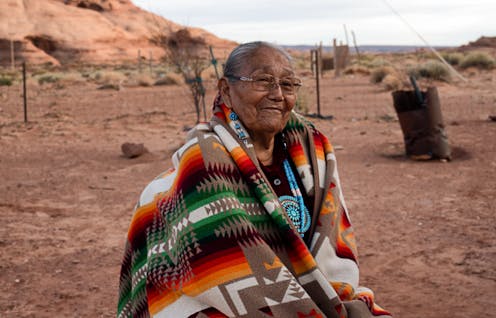Much of the cost of dementia care in aging Native American adults is due to hospitalization
- Written by Joan O'Connell, Associate Professor of Health Economics, University of Colorado Anschutz Medical Campus

The Research Brief[1] is a short take about interesting academic work.
The big idea
The total treatment costs for American Indian and Alaska Native older adults with dementia are US$2,943 higher than for those without dementia because of higher hospitalization costs, according to our new study[2] published recently in the journal Alzheimer’s & Dementia.
This is the first assessment of the treatment costs among American Indian and Alaska Native adults with dementia. Our goal was to provide the Indian Health Service and tribes information to improve their understanding of how health service resources are allocated. Such information can help in decision-making about how to meet the needs of these patients and their families in the future.
We analyzed data for American Indian and Alaska Native adults ages 65 and older who lived in 10 geographic areas throughout the United States. We obtained the data from the Indian Health Service national data warehouse and other sources.
We were surprised to learn that nearly all the cost differences were associated with hospital admissions. That was not the case in a study of health expenses among a large sample of nationally representative older adults with and without dementia[3].
The high costs of treating American Indian and Alaska Native adults with dementia in the hospital suggest that much could be done to prevent some of those hospitalizations and to improve their quality of life.
Our study also found that American Indian and Alaska Native adults with dementia had higher rates of other chronic conditions such as diabetes, heart disease, chronic kidney disease and stroke than those without dementia. These conditions were associated with higher treatment costs and increased the clinical complexity of treating patients with dementia.
Why it matters
The number of American Indian and Alaska Native adults ages 65 and older is expected to more than double between 2017 and 2060[4]. As these older adults age, they are at higher risk for Alzheimer’s disease and related dementias[5]. However, little is known about dementia treatment costs among Native Americans compared with other racial and ethnic groups in the United States. This type of research is critically needed, since dementia is a costly disease to treat[6] in an already underfunded health system.
The Indian Health Service[7] was created in 1955 as a response to federal treaty obligations to provide health to Native peoples. Because of structural racism and other factors, resources for the Indian Health Service and tribal health services have been historically strained[8]. For example, in fiscal 2019, the Indian Health Service’s yearly spending per person was $4,078[9]. While this amount does not include all spending associated with patient care, it is substantially lower than the per capita spending for the U.S. general population, which was $11,582 for the same period[10].
The Indian Health Service and tribes provide hospital, clinic and community-based services to meet the health needs of older Native adults, using culturally tailored and culturally relevant approaches[11]. However, the need for additional services for these patients is great.
Other challenges for treating chronic conditions like dementia in American Indian and Alaska Native peoples include shortages of health care providers and community factors that influence patient access to health services, such as low household income and the rural geography.
What other research is being done
This study is part of a larger project, in collaboration with the Indian Health Service and tribal health programs, to identify and prioritize strategies to improve health outcomes among those in this aging population with chronic conditions.
We are also working to understand why American Indian and Alaska Native adults with dementia are being admitted to the hospital and how patients’ social, demographic and economic characteristics – such as rural location, income and education – influence hospital use. And we are trying to determine what percentage of costs and admissions is potentially preventable with increased access to outpatient, community and home-based services.
[Get the best of The Conversation’s politics, science or religion articles each week.Sign up today[12].]
References
- ^ Research Brief (theconversation.com)
- ^ our new study (doi.org)
- ^ nationally representative older adults with and without dementia (doi.org)
- ^ more than double between 2017 and 2060 (acl.gov)
- ^ higher risk for Alzheimer’s disease and related dementias (www.alz.org)
- ^ dementia is a costly disease to treat (www.alz.org)
- ^ Indian Health Service (www.ihs.gov)
- ^ historically strained (doi.org)
- ^ yearly spending per person was $4,078 (www.ihs.gov)
- ^ $11,582 for the same period (www.cms.gov)
- ^ culturally tailored and culturally relevant approaches (www.cdc.gov)
- ^ Sign up today (memberservices.theconversation.com)
Authors: Joan O'Connell, Associate Professor of Health Economics, University of Colorado Anschutz Medical Campus

